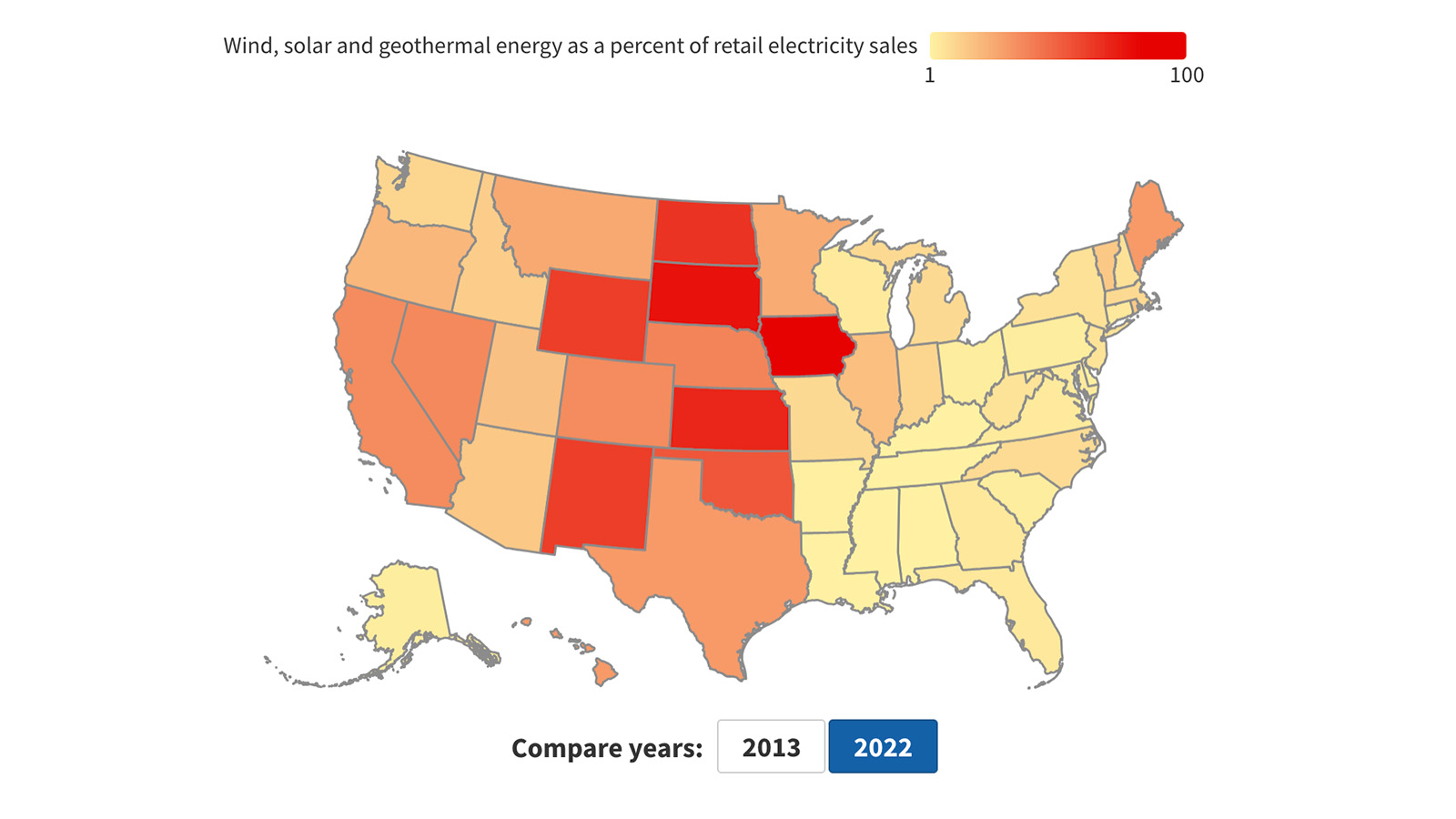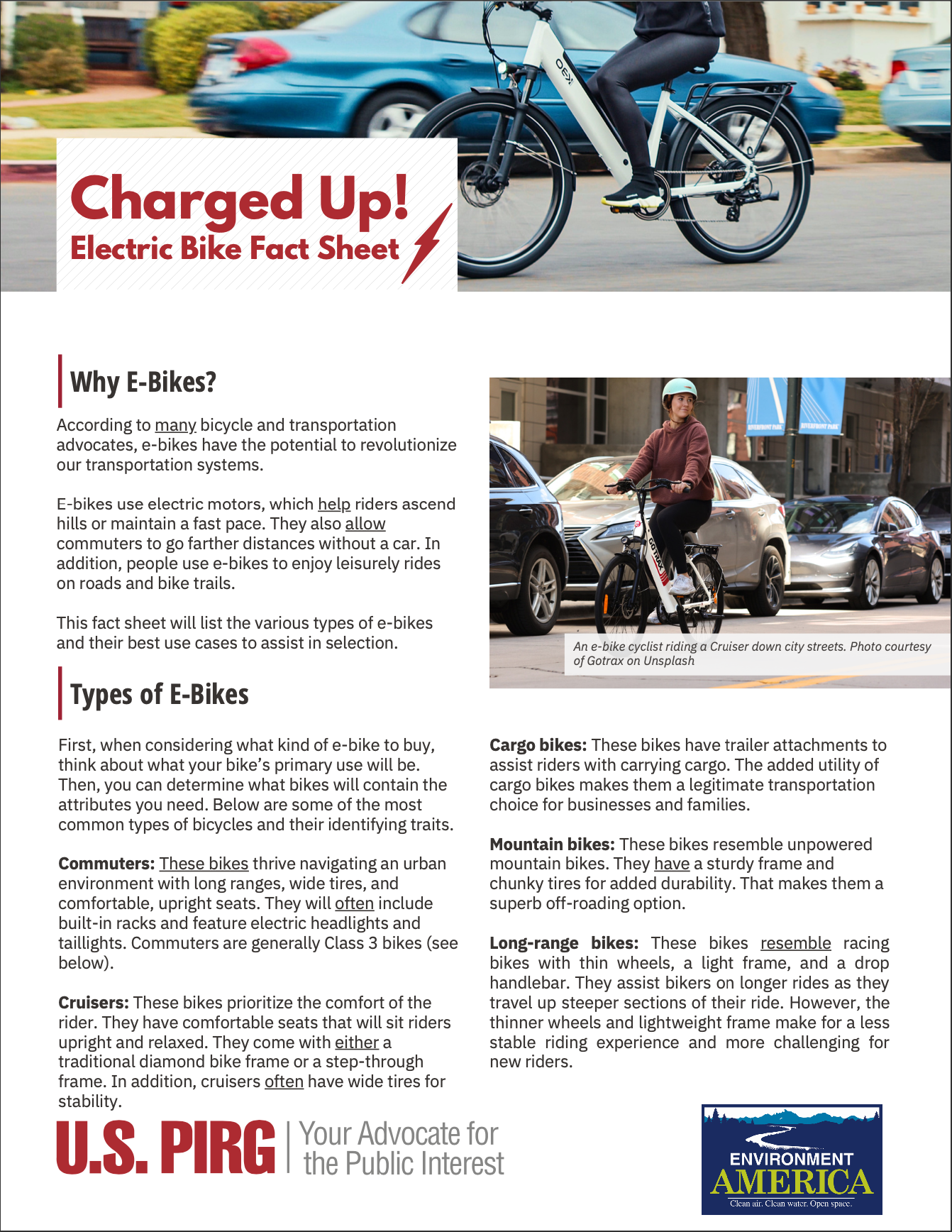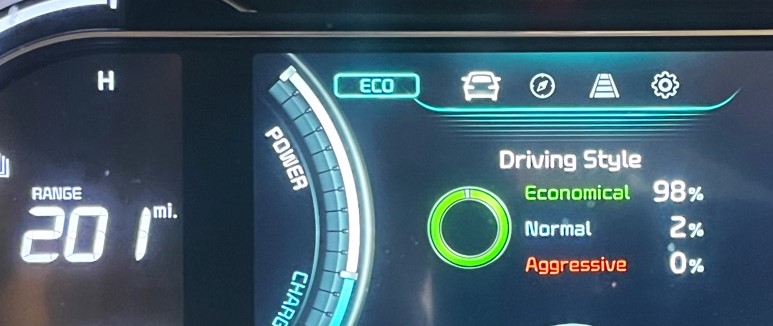
Charged Up! Electric Bike Fact Sheet

Downloads
Why E-Bikes?
According to many bicycle and transportation advocates, e-bikes have the potential to revolutionize our transportation systems.
E-bikes use electric motors, which help riders ascend hills or maintain a fast pace. They also allow commuters to go farther distances without a car. In addition, people use e-bikes to enjoy leisurely rides on roads and bike trails.
This fact sheet will list the various types of e-bikes and their best use cases to assist in selection.
Types of E-Bikes
First, when considering what kind of e-bike to buy, think about what your bike’s primary use will be. Then, you can determine what bikes will contain the attributes you need. Below are some of the most common types of bicycles and their identifying traits.
Commuters: These bikes thrive navigating an urban environment with long ranges, wide tires, and comfortable, upright seats. They will often include built-in racks and feature electric headlights and taillights. Commuters are generally Class 3 bikes (see below).
Cruisers: These bikes prioritize the comfort of the rider. They have comfortable seats that will sit riders upright and relaxed. They come with either a traditional diamond bike frame or a step-through frame. In addition, cruisers often have wide tires for stability.
Cargo bikes: These bikes have trailer attachments to assist riders with carrying cargo. The added utility of cargo bikes makes them a legitimate transportation choice for businesses and families.
Mountain bikes: These bikes resemble unpowered mountain bikes. They have a sturdy frame and chunky tires for added durability. That makes them a superb off-roading option.
Long-range bikes: These bikes resemble racing bikes with thin wheels, a light frame, and a drop handlebar. They assist bikers on longer rides as they travel up steeper sections of their ride. However, the thinner wheels and lightweight frame make for a less stable riding experience and more challenging for new riders.
Frequently Asked Questions
How far can you go with one charge?
E-bikes’ range varies by model, but most pedal assisted e-bikes can get between 15 and 100 miles. The terrain, assist level, the motor type, and the battery all impact range. You can also operate e-bikes after the battery dies without damaging them, but it is more challenging.
What does it cost to operate?
It will cost about 10 cents per mile to charge and maintain an e-bike.
How long do the batteries take to charge?
The average battery will fully charge in about three to five hours. Larger batteries may take longer. Charging time also depends on the charger itself.
Can I ride an e-bike in any conditions?
You can ride an e-bike in the same conditions as an unpowered bike. The electronics in e-bikes can handle rain and other weather conditions.
How much cargo can an e-bike carry?
E-bike trailer mounts attach to the back of bikes, allowing riders to carry cargo on their rides. In addition, there are endless bike accessories to help move everything from groceries to a few small children.
What’s a “class?”
There are three classes of e-bikes differentiated by their top speeds, assist styles, and legal permissions. Class 1 and 2 e-bikes assist tap out at 20 mph and can ride in bike lanes. Class 3 e-bikes assist up to 28 mph but require riders to be over 17, wear a helmet, and stay on the road.
Note: Don’t hesitate to go to your local bike shop if you have questions. Shops will be able to find the right bike for you and answer any riding or maintenance questions you may have.
Safety Recommendations (from our friends at the Bicycle Coalition of Maine):
Proper infrastructure is important in keeping bike riders safe. However, here are some things an individual can do to stay safe.
- Wear a helmet and bright clothing that makes you visible.
- Before riding, check your tire pressure, breaks, chains, and cranks for damage.
- Ride on the right side of the road with traffic. Yield to pedestrians.
- Obey traffic signs and signals.
- Be predictable and alert to your surroundings. Use hand signals to express your intent to turn.
Topics
Find Out More


Electric vehicles are good. We can make them better.

Frequently asked questions: electric vehicles (EVs)

